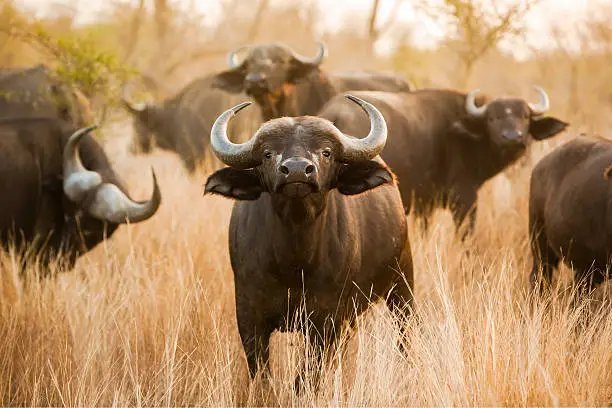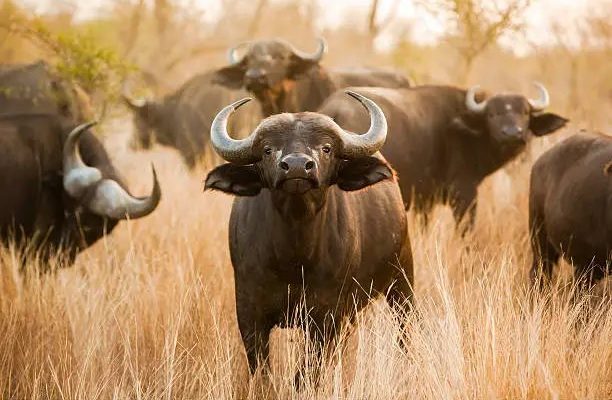
Oxen, primarily domesticated versions of the large, ancient wild ox known as aurochs, display some unique parenting behaviors. These behaviors ensure that their calves not only survive but thrive in their often rugged and challenging environments. So, let’s take a closer look at how these magnificent animals nurture their young and what this means for their survival as a species.
The Bond Between Mother and Calf
One of the most important aspects of how oxen raise their young starts with the bond formed between the mother ox, called a cow, and her calf. This connection is similar to how we form attachments in families. From the moment a calf is born, it relies heavily on its mother for warmth, protection, and nutrition.
Cows are extremely attentive to their newborns. They clean them off right after birth, which is crucial for the calf’s first moments in life. This cleaning stimulates the calf’s circulation and helps them start breathing. Imagine being born and your first experience is being embraced and cared for—this is what makes a calf’s first moments comforting and safe.
As they grow, calves will stay close to their mothers, learning important survival skills. You might notice that mother oxen are very protective. If they sense danger, they will position themselves between their calf and the threat, demonstrating an instinctual understanding of what it means to protect their young.
The Role of the Herd
Oxen are social animals, and they typically live in herds. This social structure plays a significant role in raising calves. When a cow has a baby, the entire herd tends to look out for the little one. You see, there’s safety in numbers. Herd members help keep an eye on the calves while the mothers graze or move around.
This collective childcare is pretty impressive. Older females, or even other young calves, might step in to assist the mother. They’ll watch over the youngsters, allowing the moms to graze without worry. It’s like sending your kid to a summer camp where everyone pitches in to keep an eye on the children.
Moreover, being part of a herd helps calves socialize. They learn how to interact with others and develop vital skills, such as how to communicate and recognize threats. The herd acts as a safety net, fostering a sense of community among the young oxen.
Feeding is a big part of raising calves. Cow’s milk is rich in nutrients and is essential for a calf’s growth in the early weeks. Just like babies need milk for healthy development, calves require their mother’s milk to strengthen their bodies and immune systems.
As they mature, calves start to nibble on grass and other vegetation, gradually shifting from milk to solid food. This transition is crucial because it helps them adapt to what they will eat as adults. Calves will often imitate their mothers, learning what to eat and what to avoid.
It’s fascinating to see the process unfold. A calf will observe its mother grazing and copy her actions. It’s similar to how we learn to cook by watching our parents in the kitchen. This method of learning through observation ensures that the calf knows what is safe and nutritious, setting them up for a healthy life.
Teaching Survival Skills
One of the most vital aspects of parenting in the wild is teaching survival skills. Calves must learn how to find food, navigate the terrain, and recognize potential dangers. Mothers play a key role in this education.
For instance, a cow will lead her calf to watering holes or prime grazing areas. She’ll show them how to recognize different plant species, helping them learn which ones are safe to eat. This hands-on experience is essential because, in the wild, knowledge is power.
In addition to foraging skills, calves learn to be aware of their surroundings. Mothers will teach them to spot predators, such as wolves or bears. When a cow senses danger, she might use body language or sounds to alert her calf. It’s fascinating—almost like she’s giving a crash course on survival that could mean the difference between life and death.
Challenges of Raising Young Oxen
Raising calves isn’t without its challenges. Environmental factors like weather, food availability, and predators all pose threats to their survival. For example, during harsh winters, finding enough food can be tough, and young calves can struggle to keep warm.
Predation is another significant concern. If a calf gets separated from its mother, it might become vulnerable to attacks. Cows are aware of this, which is why they often stay close together in the herd. They’ll even use herd dynamics to their advantage, forming defensive circles when threats arise.
Additionally, the social structure within the herd can affect calf rearing. Sometimes, young bulls or other females may challenge a mother cow’s authority. This can lead to stress for the mother and make parenting even harder, as they have to balance defending their young with maintaining peace in the herd.
The Importance of Strong Parental Bonds
Finally, the bond between mother and calf goes beyond mere survival; it’s crucial for the wellbeing of the species. Strong maternal bonds ensure that calves are raised effectively, helping to sustain the population. In a world where habitats are constantly changing and predators are ever-present, fostering healthy young oxen is essential.
You might be wondering why this matters. Healthy calves grow into strong adults, ready to contribute to the herd. In many ways, the survival of oxen as a species hinges on this cycle of nurturing and teaching. It’s a continuous process that emphasizes the importance of community, skill-building, and protection.
In conclusion, the way oxen raise their young in the wild is a heartwarming and fascinating process. From forming tight bonds with their mothers to navigating the complexities of herd life, these animals demonstrate a remarkable commitment to nurturing their calves. It’s a reminder of how important relationships and community can be for survival.
So the next time you see an ox, remember the powerful story behind its nurturing nature. The bond of motherhood in the wild is strong, and oxen exemplify that beautifully—ensuring the next generation is well-equipped to face the world.

